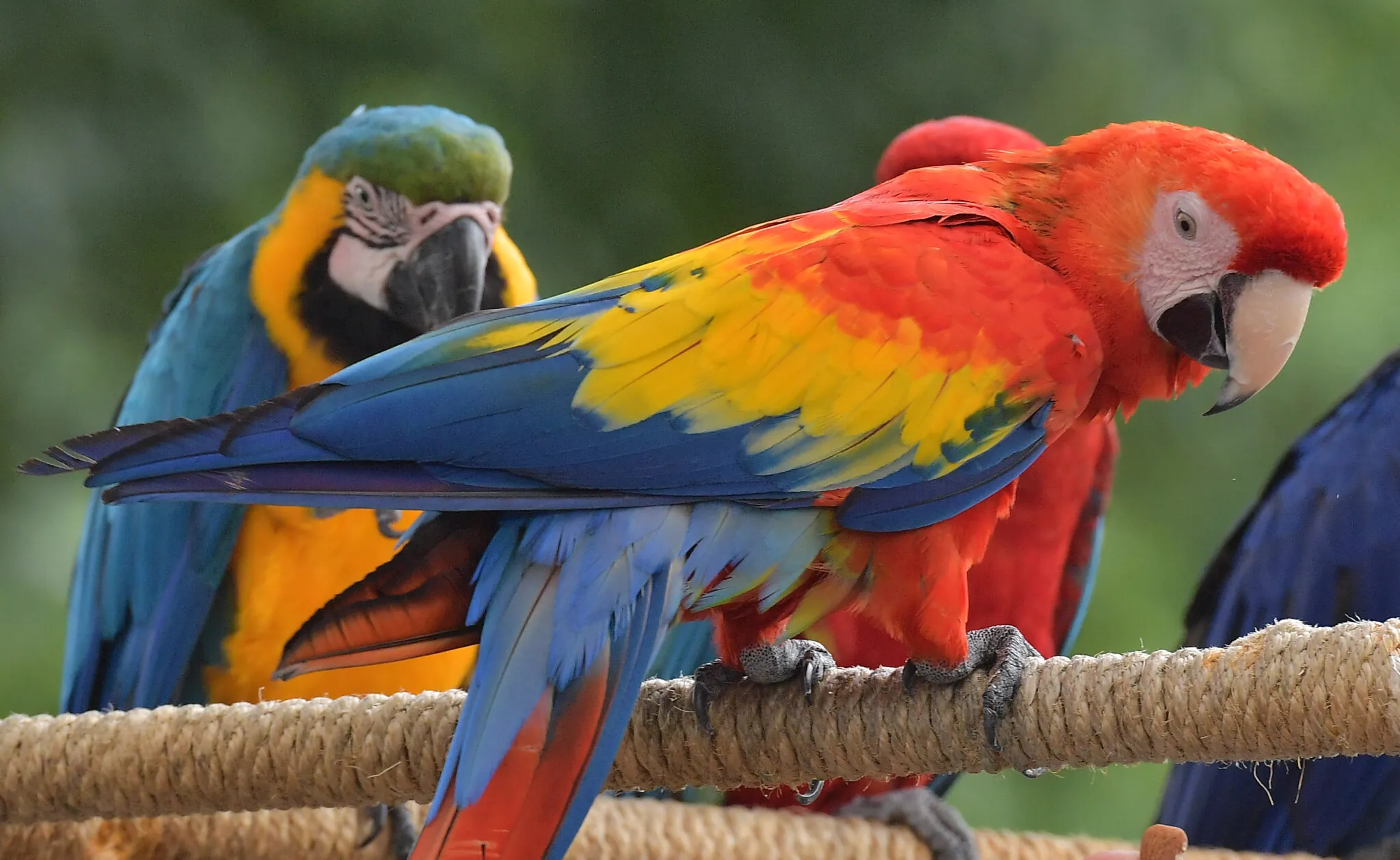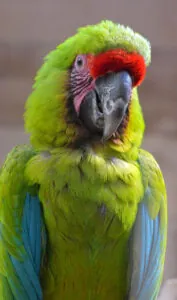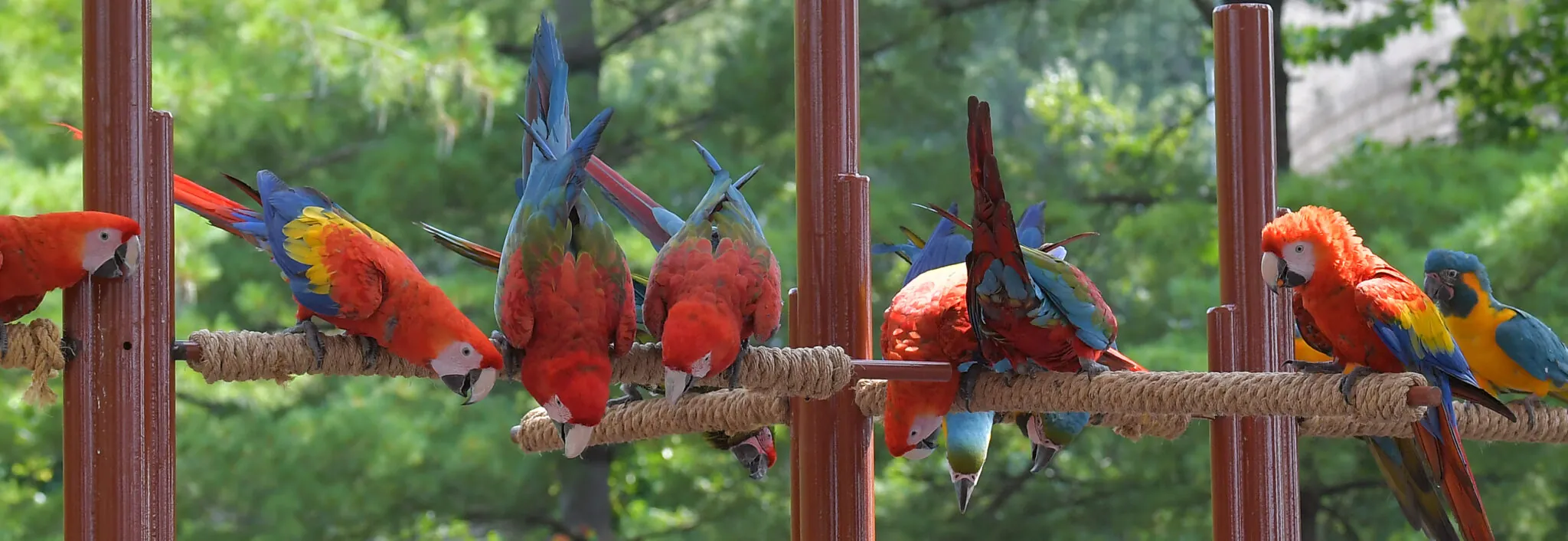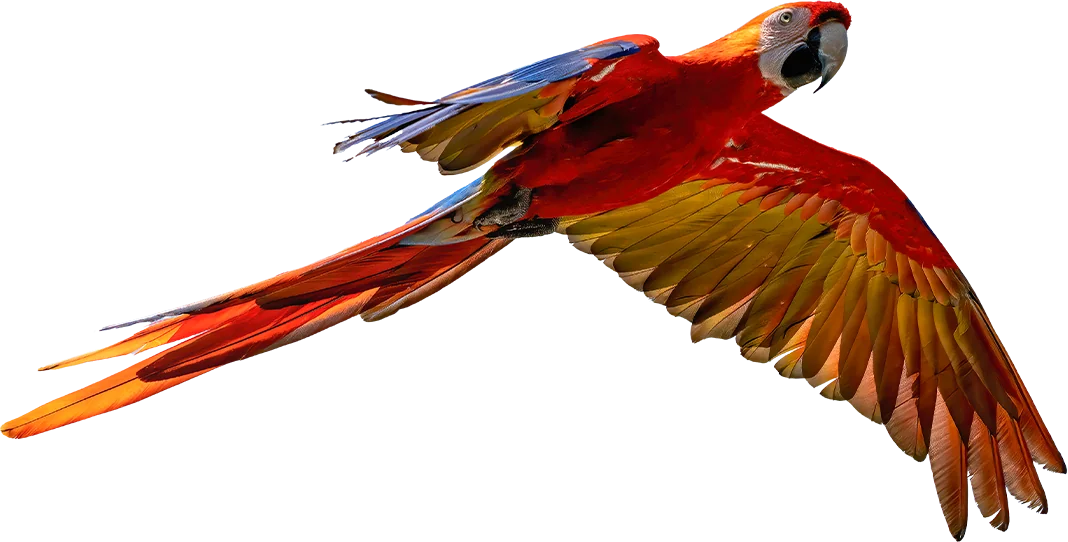-
Menu
- Plan Your Visit
- Meet The Animals
- Check Out Events
- Memberships
- About The Zoo
- Support the Zoo
- Conservation
- Education
- Groups & Private Events
- Zoo News
- Contact
- Indianapolis Prize
- Global Center for Species Survival
- Schedule
- Donate
- Membership
- Tickets

- Plan Your Visit
- Meet The Animals
- Check Out Events
- Memberships
- About The Zoo
- Support the Zoo
- Conservation
- Education
- Groups & Private Events
- Zoo News
- Contact
- Indianapolis Prize
- Global Center for Species Survival

Macaws
About
Macaws are clever parrots famous for their bright, bold colors! They live in pairs or noisy flocks, gliding through forests or grasslands to feed on seeds, nuts, fruits and other plant parts. Like other parrots, macaws zygodactyl feet: two toes face forward and two face backward, which is a great adaptation for perching in trees. They also have strong beaks that are well adapted for cracking open hard seeds and nuts. They can be messy eaters, though. That’s okay! Dropped seeds that land on the soil can help a forest grow.
Some macaws from male and female pairs that mate for life. Females lay 2 or 3 eggs in a tree hollow. Both parents feed and protect the young.

Conservation
Macaws are popular pets. But some macaws are endangered in the wild due to habitat loss and illegal pet trading. Do your research before adopting a parrot as a pet and make sure it not one of the species that are endangered in the wild—and that you can care for a busy bird that can live for 50 years or more!
The Zoo has supported macaw conservation since 2015 through the Macaw Recovery Network, which works to release more great green macaws in Central and South America. We also have supported the World Parrot Trust since 2016 in their efforts to protect the blue-throated macaw in Bolivia. Your visit to the Zoo helps make this work possible. Thank you!
Animal Amigos
WHERE ARE THEY AT THE ZOO?


Magnificent Macaws
Don’t miss Magnificent Macaws and just look up to enjoy a rainbow of color streak across the Zoo! There’s something in the air with the Magnificent Macaws presentations. See flocks of bright macaws fly from destinations across the Zoo—in open air—to The Perch inside the Bicentennial Pavilion. Take a bird’s eye view and meet seven species of macaws! See how many different colors you can spot—and listen firsthand to their loud social calls. Magnificent Macaws is the best place to see bird adaptations and learn how the Zoo helps conserve these wild wonders of the sky. Magnificent Macaws presentations are offered seasonally during the year. Join us!Check out our schedule of daily presentations!

